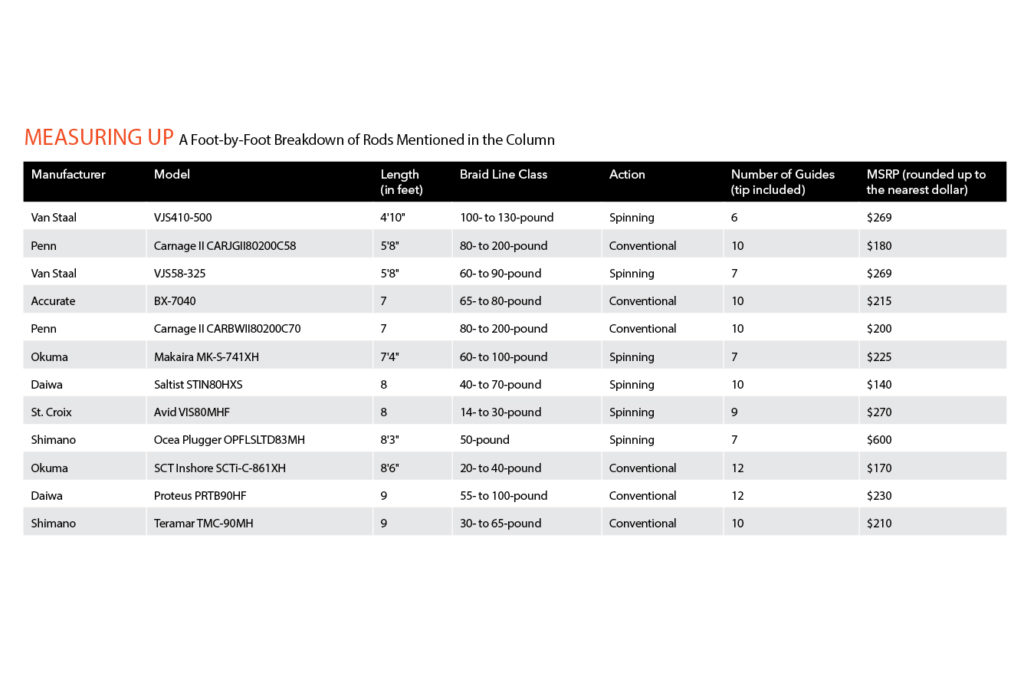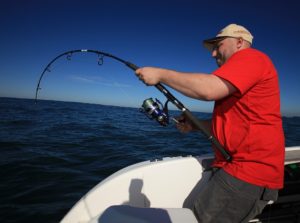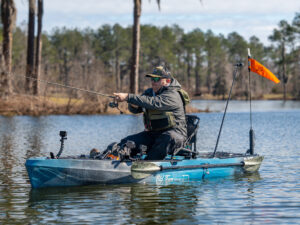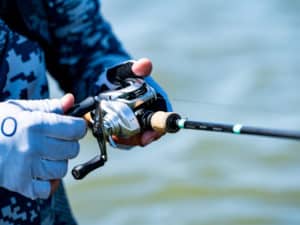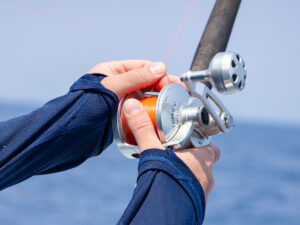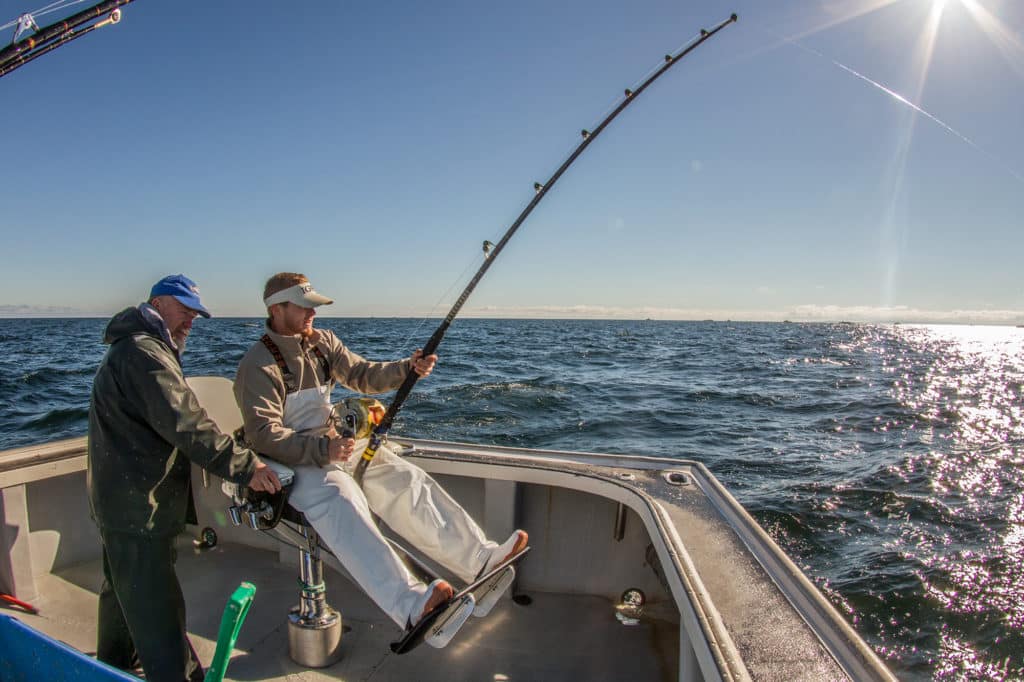
When I grab my go-to rod, it’s a 6½-foot medium-action spinner. A quick glance at the rod racks in my garage shows that the majority of my sticks measure 6 to 7 feet in length. Anglers all have their favorite species to target (with the fishing gear to prove it), and yet this range of rods remains the most popular in salt water, no matter the weight or style. The length provides a good compromise between strength, control and castability.
Still, on a recent jigging trip, I found myself wanting a shorter rod. On another day, I needed to cast much farther, and recognized how useful a longer rod would be. So I set out in search of not-so-common rod lengths, contacting rod manufacturers to learn when short and long rods are preferred and to discover some of today’s newest options.
Cast for Distance
Whether casting artificials or live baits with spinning or conventional gear, seriously consider a 7-foot-plus rod — the extra length truly equates to greater distance. Okuma’s spiral carbon technology (SCT) rods take full advantage of length, ranging in size from 7 to 8½ feet.
“We utilize over 6,000 strands of carbon fiber and cross-wrap the exterior rod blank in a dual helix pattern,” says John Bretza, director of product development at Okuma Fishing Tackle. “The SCT rods also feature UFR [unidirectional fiber reinforcement] technology, incorporating several layers of longitudinal fibers in the upper section of the rod to help distribute pressure over a longer area when loaded and to improve rod strength in high-sticking situations.”
The SCT Inshore rods, such as the 8-foot-6-inch SCTi-C-861XH model, were designed for anglers chasing calico bass, yellowtail and white seabass. On the East Coast, anglers use the rods for big bull redfish and snook, says Bretza.
When slinging iron, long jig sticks are the new normal for many. Okuma’s SCT jig sticks measure 8 feet and feature a deck-style grip (no reel seat). Shimano’s Teramar West Coast jig sticks, built with Shimano TC4 blanks and a Techtape outer wrap, range from 7 to 9 feet long. Depending on the weight, jig sticks can handle most species, including wahoo, white seabass, tuna and plenty of others.
“I use the Shimano Teramar 90MH, a 9-footer, paired with 80-pound Maxcuatro and a Tranx 500 reel,” says Capt. Ben Florentino, of Long Beach, California. “I absolutely need that 80-pound to turn the heads of yellowtail and calico bass from heading straight into the structure.”
A 9-footer is also necessary for longer casts, he says. “The first cast will draw strikes from smaller bass, but because calicos are competitive and aggressive by nature, soon those bigger fish will find the subsurface iron.”
Jig sticks feature rod tapers that load effectively when casting to a school of “breezing” (surface-swimming) fish, says Bretza. Much of the blank should remain stiff, while the tip should soften for casting and absorbing jarring bites.
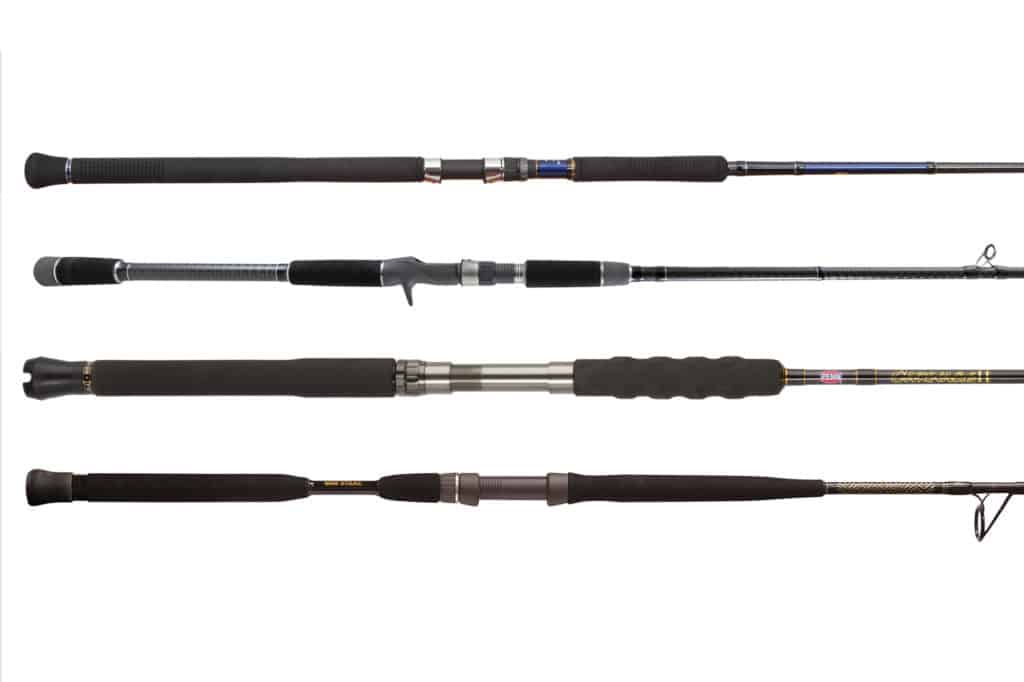
The Long and Short of It
Stout Shorties
Specialized speed-jig rods shorter than 6 feet in length provide two key advantages: soft, forgiving action for easier jigging, and surprising pulling power to turn fish headed toward structure.
Van Staal’s jigging rods, including the VJS58-325, VJS70-325 and VJS70-500, come in 5-foot-8-inch lengths. “A combination of fiberglass and high-modulus graphite allows the rod to create a powerful parabolic shape when fighting fish,” says Craig Cantelmo, field sales manager at Van Staal. “Its unique handle tapers, creating a strong grip up or down the rod for anglers during extended battles.”
Numerous other companies also produce short jigging rods, such as Shimano’s Game Type J jigging rods. “It’s much easier to work a jig, and the particular action necessary, with a shorter rod,” says Shimano’s Robby Gant.
The angler also feels more comfort with a slow-action rod, with the bend occurring closer to the hand grips — just make sure not to high-stick the rod in the process. “Shorter rods allow for a relaxed body position during long fights with large pelagic fish, allowing the angler to short-stroke the fish to gain line,” points out Cantelmo.
But there are definite trade-offs. Shorter rods lack the casting distance of longer rods, instead utilizing control and leverage that 7-foot-plus rods don’t have.
Suitable for Standup
The specialized West Coast rail rod, once considered cheating or sacrilegious, is booming in popularity and length.
“That 8- to 9-foot rod, with 50-pound test on a two-speed reel, is very popular,” says Steve Carson, director of Penn Fishing University. “Rail rods have the long foregrip made from high-density foam, and often a 16-inch butt to rest underneath an angler’s arm.”
And with the oscillating bait patterns of the West Coast trending toward smaller baits such as anchovies, including “pinheads” that range from 2 to 3 inches, longer rods and lighter line tests are necessary to make farther casts from the boat.
“Even casting surface and subsurface irons, those specialized rods start at 8½ feet and can even reach 10 feet in length,” says Carson. Okuma produces Makaira spinning rods that measure 7 feet 4 inches and 7 feet 6 inches specifically for anglers distance-casting to bluefin tuna with surface poppers, glide baits and soft plastics. The MK-S-741XH and MK-S‑762XH models both handle up to 100-pound braid, making anglers appreciate the fight of a giant much more after an extended battle, says Bretza.
As much as a lengthy rod offers casting distance, a shorter rod helps leverage fish, especially massive-body game fish. That’s when stand-up tackle shorter than 6 feet shines. This type of stand-up gear is trolled, or a live bait is flipped away from the boat; distance casting, however, isn’t really an option.
“The Shimano Terez stand-up rods, with the carbon curve butt, measure 5 feet 6 inches or 5 feet 9 inches,” says Gant. “When battling fish over 100 pounds, when you need to leverage the fish with every advantage available, the shorter rods are the best option. A longer rod is a longer lever, which leads to less control, especially on larger fish.”
No matter which rod size fits your sweet spot, don’t shy from looking above or below that same old 6-foot comfort zone.
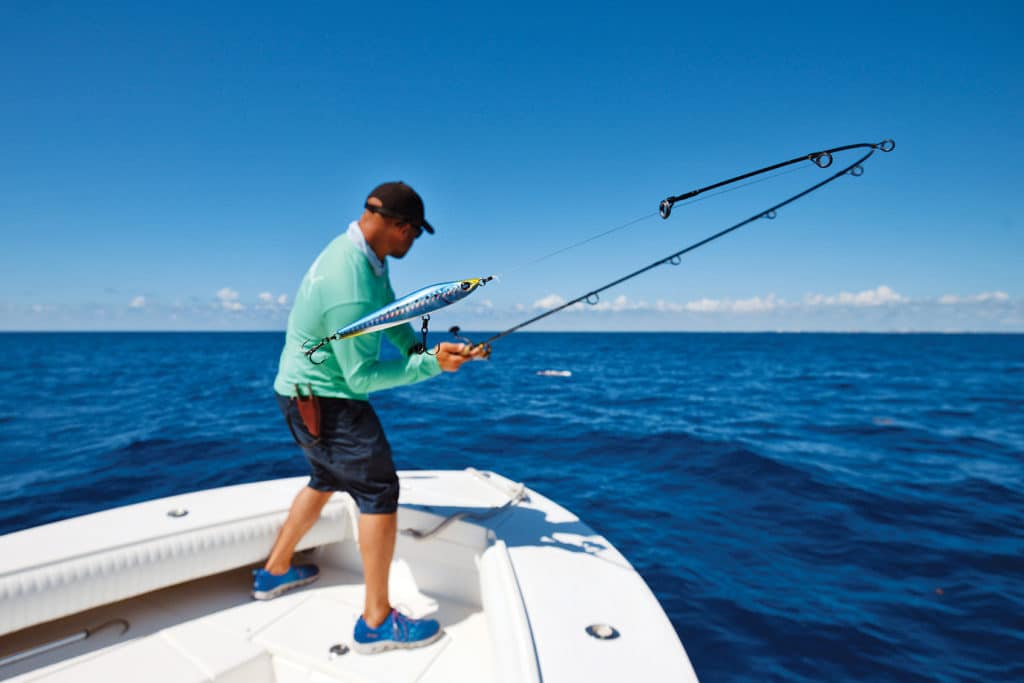
Not Ready to Make the Jump?
Steve Carson experiments with everything from 7- to 10-foot rods when casting to tuna, yellowtail, wahoo and dorado up to 50 pounds as part of Penn Fishing University. The technological advantage of today’s powerful two-speed reels, such as the Penn Torques, enhances angler leverage and control without having to turn to shorter rods, he says.
“Anglers were using rods under 5½ feet before two-speed reels were around,” Carson says. “In 1987, two-speeds started to spread slowly, and in the last five to 10 years, two-speeds are now available in most sizes.”
Anglers who don’t have space on the boat or who are still leery of a long rod’s (sometimes) unwieldy length can find a compromise in new rod options from Penn that measure just 7 or 7½ feet. The Penn Carnage II Boat casting and spinning rods feature SLS3 construction: inner and outer spiral-wrap layers of carbon fiber to sandwich middle layers of alternating longitudinal carbon and glass. Carson prefers a CARBWII80200C70 for 50- to 130-pound gear, a CARBWII50130C70 for 40-pound gear, and a CARBWII3080C70 for 30-pound gear.
